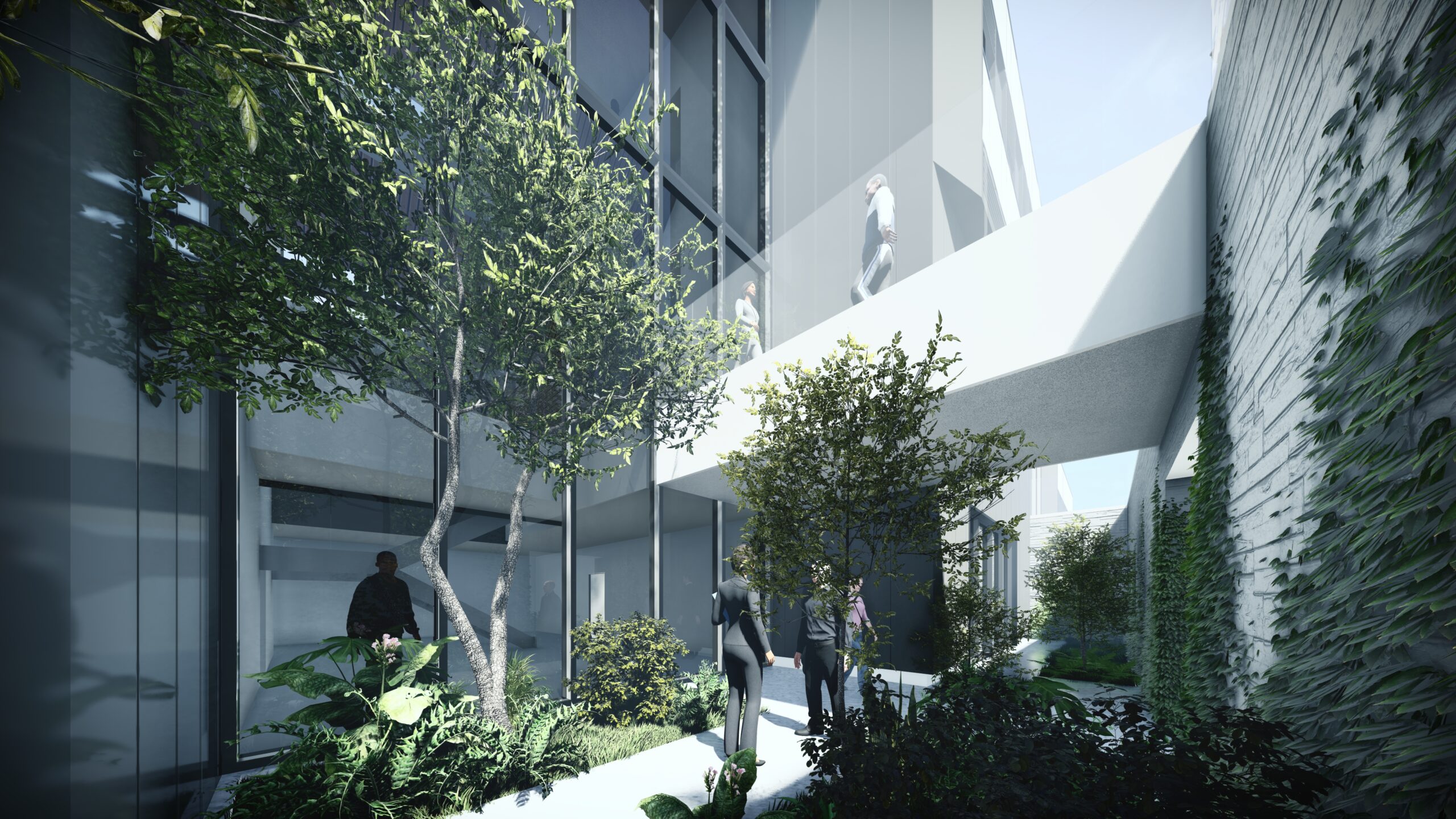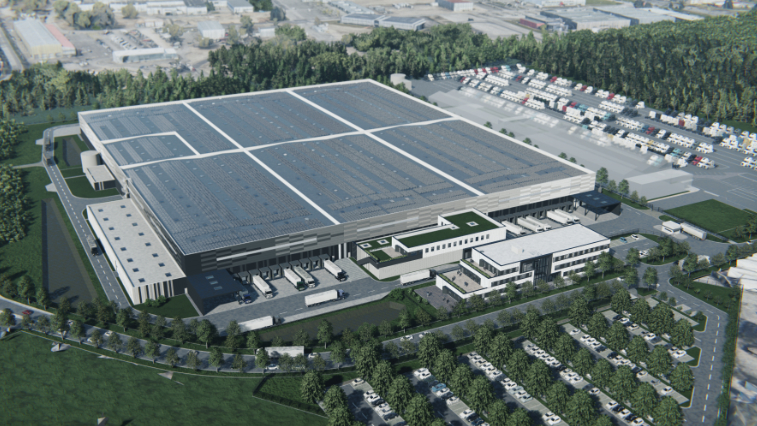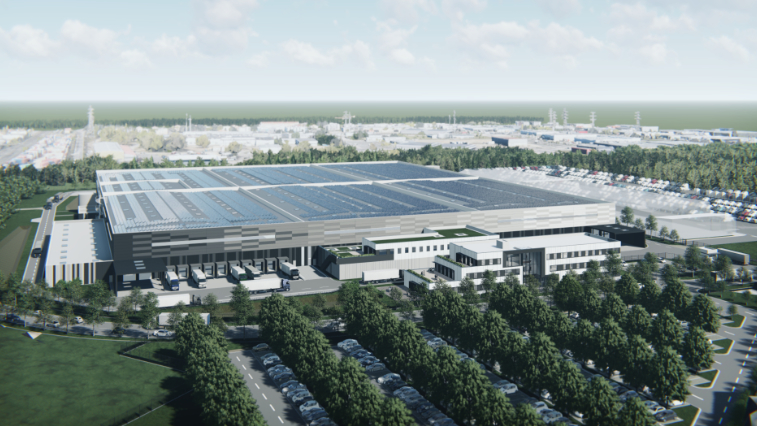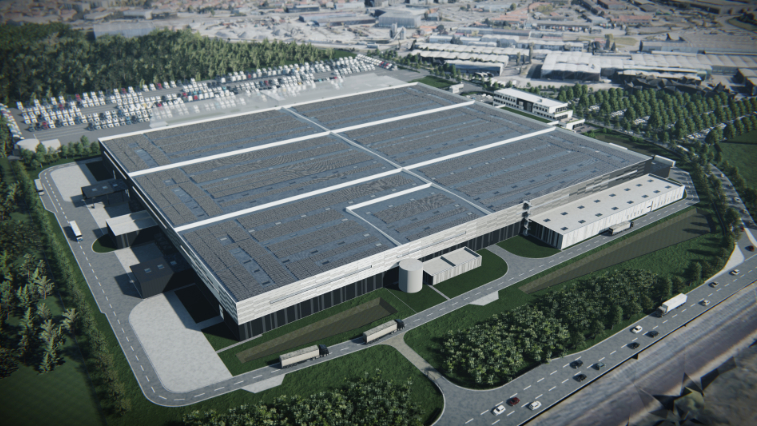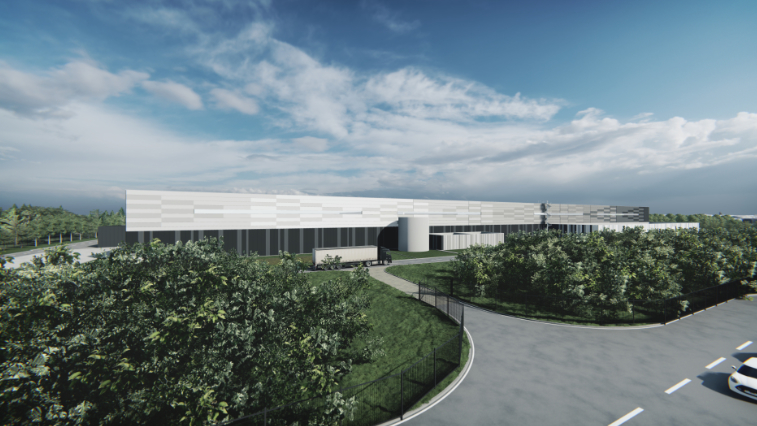Positive Energy Building
Renault Trucks, the French subsidiary of the Swedish group Volvo Trucks, is planning to construct a new positive energy building within its Lyon Saint-Priest site, covering a considerable area of 46,000 square meters. Scheduled to open in 2028, this building will house the global distribution center for spare parts of the Renault Trucks brand.
This ambitious project to construct a global spare parts distribution center is set to be established on the historic site of Saint-Priest, replacing existing facilities. The total investment for the realization of this new logistics platform, led by the French manufacturer Renault Trucks and the Volvo Group to which it belongs, amounts to 132 million euros. This initiative aims to demonstrate a commitment to sustainability in production methods while reaffirming Renault Trucks’ strong local presence in the Lyon metropolitan area.
The decision to build this new logistics center stems from a strategic consideration to optimize operations and meet current environmental standards. The current distribution center building, nearly a century old and located in Vénissieux, no longer meets the operational and environmental requirements of Renault Trucks. After considering various options, including transferring operations to another site, the manufacturer has ultimately chosen to relocate its logistics platform to the Saint-Priest site, where its axle and axle manufacturing plant currently operates. This decision will involve significant work over the next three years, including the demolition of the existing building and soil remediation at the former factory site.
The new building will accommodate over 500 employees and will be equipped with a 46,000 square meter warehouse, offering both standard storage and a fully automated area dedicated to small parts, as well as a space for battery storage. The group is committed to adhering to the strictest safety standards, with complete separation of pedestrian, truck, and other vehicle flows. Additionally, significant efforts will be made to improve the ergonomics and comfort of operators, including the robotization of certain tasks and optimization of storage racks. A 4,000 square meter office area will also promote collaborative work and contribute to the operational efficiency of the center.
Renault Trucks has emphasized its commitment to the environment by designing this building as a positive energy building, without the use of fossil fuels. The distribution center will be equipped with photovoltaic panels across its entire roof, allowing it to generate renewable electricity to meet its own needs as well as those of neighboring buildings. Furthermore, the group is committed to greening the site by planting 400 trees, thereby contributing to improving biodiversity and quality of life in the workplace.
The project implementation timeline includes submitting the building permit application in 2024, followed by the transfer of operations from the Ponts & Essieux factory to Vénissieux in 2025. Construction will begin in 2026, with equipment installation scheduled for late 2027. The transfer of operations to the new distribution center is planned for early 2028, with full operation of the center expected by mid-2028.
Architectural Design: Bridge Building and Revitalization of Existing Tunnel.
The architectural project involves the realization of two closely linked buildings, functioning in symbiosis:
> The first ensemble consists of a storage center of approximately 47,000 square meters divided into 6 cells. This first building is accompanied by a number of technical and maintenance rooms positioned around its periphery.
> The second ensemble refers to the office and social facilities associated with the project. This part comprises approximately 4,500 square meters of surface area.
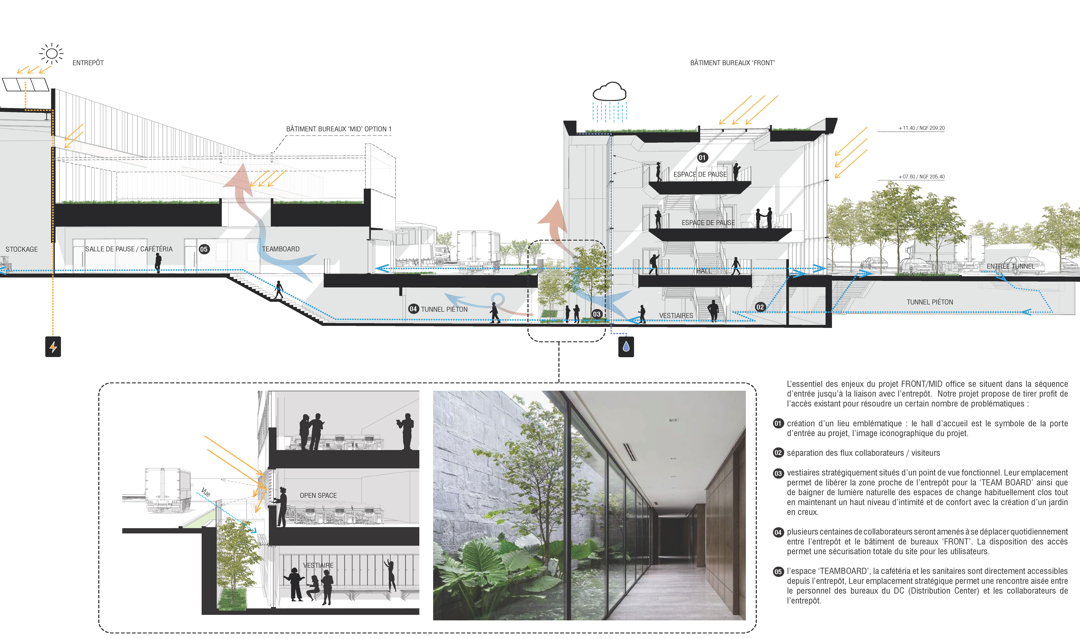
The project constraints are manifold (5-25m setback, 10% green spaces in one piece, fire access, Classified Installations for Environmental Protection, gas pipelines, etc.), and some are quite specific (site access through an underground tunnel). Additionally, the available space for office positioning is very dense, posing challenges regarding flow, natural light provision, and program organization.
Our architectural response proposes to take advantage of the underground level access to the main plot by creating a semi-buried space flooded with natural light. The strategic positioning of exchange zones allows us to differentiate user flows (offices, warehouse, and visitors) and also create views towards English gardens, providing a great visual comfort to the exchange zones that would not be achievable on the ground floor for privacy reasons.
This architectural approach avoids the crossing of heavy vehicle and pedestrian flows, and also frees up the ground floors of the ‘Front’ and ‘Mid’ buildings to accommodate activities such as break rooms, team boards in the ‘Mid-Office’ area, restaurant, cafeteria, reception hall, meeting rooms in the ‘Front-Office’ area.
Based on the architectural concept explained on pages 14-15 of the document, we have developed two office layout projects by positioning the DC (Distribution Center) part either on the ‘Mid’ side (page 17) or on the ‘Front’ side (page 23). In both cases, the Front office building, and particularly its reception hall, symbolizes the main entrance to the project for all site employees as well as visitors. The cascade of terraces from the restaurant area to the ground floor continues on several levels, providing outdoor breathing spaces for users.
The warehouse design aims to optimize stocks, flow management, and employee safety. To ensure user comfort, we have also taken care to offer a pleasant working environment by carefully managing natural light inputs (zenithal and lateral openings for exterior views).
The final aspect of our proposal concerns façade treatment (page 29). At this stage of the sketch, we have chosen not to settle on a single architectural style or color scheme, but rather to open up the reflection by proposing alternative treatments and materials.
The reflections we have conducted for the COLISEE VOLVO project aim to create a high-performing project, as environmentally friendly as possible, with a sober and contemporary architectural style offering a pleasant and secure working environment for its users.
